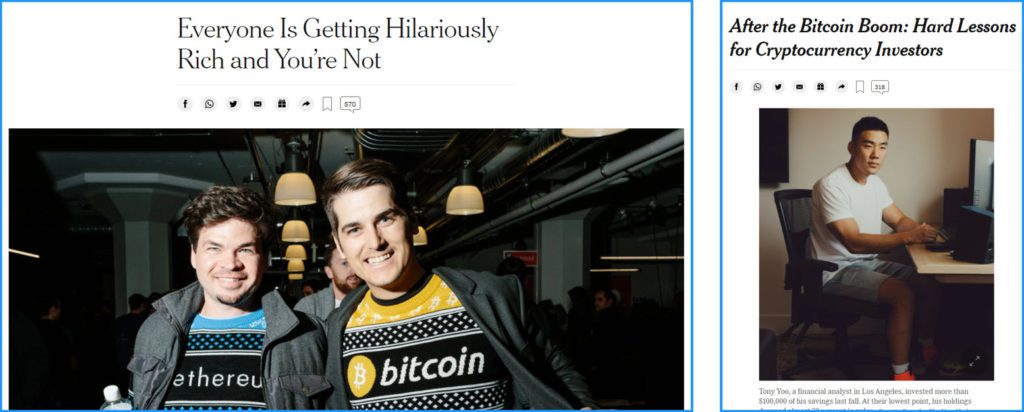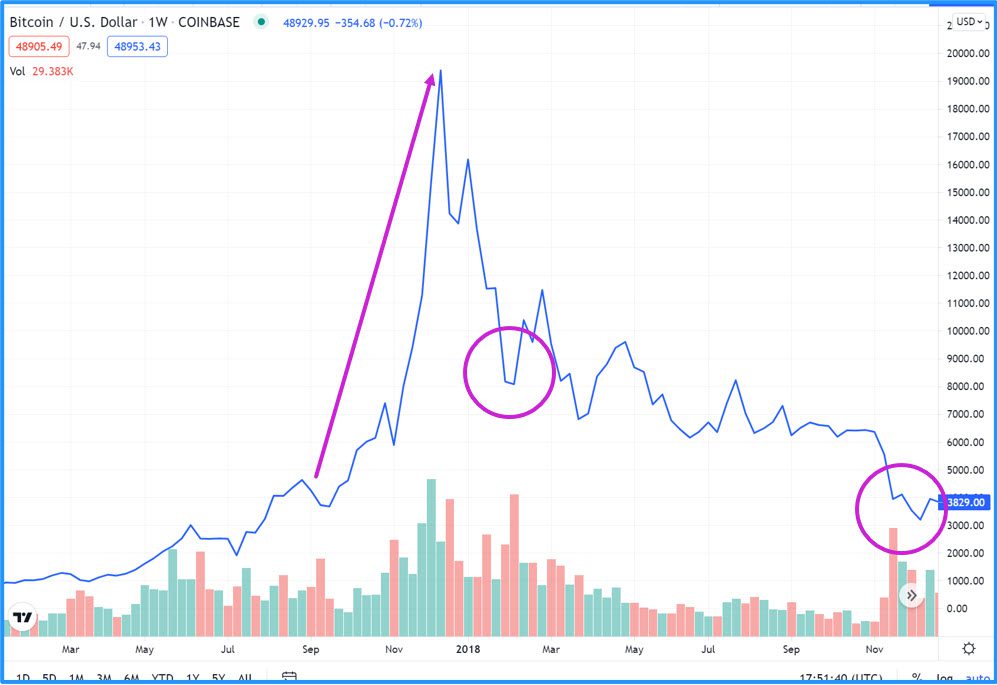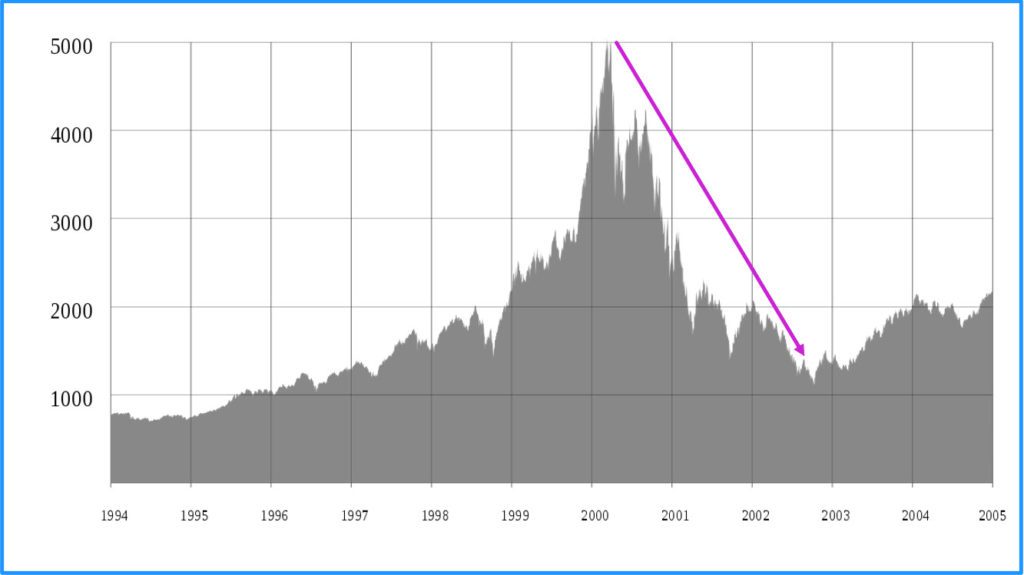Every minute, the market is moving up or down based on a series of events, such as investor trades, economic conditions, or even major, macro events such as a natural disaster or presidential election. However, sometimes the biggest movements come from events that build up over time. These events are typically left unseen until it’s too late. This phenomenon is known as a stock market bubble, and it can cause have catastrophic impacts to investors’ portfolios. So, how do these stock market bubbles occur? How can you tell if you we are in a bubble? And are we in one now? All of these questions answered and more starting now.
A stock market bubble can occur anywhere at any time and not a lot of investors, especially retail investors, see it coming. In fact, all too often, individual investors accidentally contribute to these bubbles and are left holding the bag when they pop.
Making sure you keep your emotions in check when you invest is one of the first things you should master as you start investing. Because getting caught up in a bubble is often driven by emotion. Namely, the raw, speculative emotions that come with Greed and Fear of Missing Out or FOMO.
So, let’s look at what a market bubble is exactly, how they are caused, how you can identify one and how they move the market.
Stock Market Bubbles can be big or small but are driven by the same factors. They are cased when a stock or asset price is driven up over a period of time and becomes increasingly separated from its true value.
Stock Market Bubbles, as named by American economist Hyman Misky, follow 5 stages.
As you can see, there are a lot of micro events that need to occur in order to form a bubble. Every email or side conversation at a bbq where someone tells someone else to jump into this fad. counts as a micro event.
Bubbles are nasty and can be catastrophic to new investors who are chasing a fad. They can occur anywhere at any time and usually do with little fanfare.
But sometimes they are massive, and we are going to take a look at two of them, why they occurred and the impact to investors and the market.
The first market bubble was relatively small considering that it didn’t have a major impact on the stock market, but it did have a major impact on hundreds of thousands of investors chasing a crazy new trend.
In late 2017 Bitcoin was all the rage.
It was a brand-new, digital currency, traded on a new platform called Blockchain and no one understood it.
They only knew that this was something that their neighbor’s dog’s uncle’s son’s cousin bought at $5 and now in a matter of months, it grew from $500 to top out near $20,000, an astronomical rise in pricing driven by nothing but pure speculation and Fear of Missing Out.
This had all the markings of a classic stock market bubble. A new trend that everyone was talking about, no real tangible sense of what the true value of a bitcoin was and feverish speculation of greed and FOMO driving investors to get in.
And, man as fast as Bitcoin went up, it came crashing down.
Look at these two NY Times headlines.

These headlines are 6 months apart from each other. Headlines do nothing but try to get clicks. Being smart and learning to invest the right way will help you avoid bubbles and FOMO traps.
This why creating financial goals and understanding emotions is so important to start with, even before you learn how to invest. How can new investors avoid this temptation? For every story about some kid who made millions in Bitcoin, there are two about kids who bet and lost everything.
After Bitcoin’s peak in mid-December, Bitcoin crashed to 13k in a matter of a week and then less than a month later, it was at $7k. 1 year later, Bitcoin was at $3,200.

The sad thing is that most people probably got in Bitcoin near the $15k mark, subsequently losing it all.
These bubbles are not just word of mouth. I mentioned that so much of investing is headline driven. And here is a perfect example of that as it relates to the Bitcoin bubble.
Another, more sizeable bubble that I’ve already referenced is the late 90’s, early 2000’s dot com bubble. And holy smokes, it was a doozy.
Here is an awesome fact – In Spring of 1999, 1 in 12 Americans surveyed said that they were in some stage of founding a business.
Everyone was getting in on the newest fad – the internet.
Now, the internet had been around for decades, but it was the late 90’s when it started to be commercialized with the emergence of sites like Amazon.com and Pets.com. And more infamously, you may remember Priceline.com.
Priceline came to emblemize the dot com bubble in a single company.
Priceline allowed users to go online and bid on unsold airline seats. Customers were able to get cheaper flights and airlines sold unused inventory – win win.
By the end of 1999, it was selling 1,000 seats a day. It then expanded into hotels, car rentals, mortgages, anything that was relevant.
Priceline was everywhere. They spent $20 million dollars in advertising in just 6 months and their valuation skyrocketed. They went public mid-1999 and in the first day of trading, their stock went from $16 to $88
And now, in my best Keith Morrison voice – not everything was as it seemed.
The first few quarters of being public, Priceline racked up $142 million in losses. IT also had to buy tickets on the open market in order to fulfill customers low ball bid, making it lose $30 on every ticket it sold.
Customers of Priceline were also finding out that they were paying more at auction than they could have paid through a travel agent.
It didn’t matter to Priceline, and it didn’t matter to investors. And it didn’t matter to the smattering of companies that soon followed in its footsteps.
The name of the game during the dot-com bubble was to get in, go public, make a butt load of money and get out.
Companies like Pets.com, E-Toys and others followed the model to a T.
They would create a product that would fascinate and capitalize on the emerging capitalistic markets of the internet, spend a ton on marketing, sell their products at a loss, and then go public at a market valuation not near their true value.
In fact, like Priceline, these companies weren’t making a single cent in profit.
Investors were pouring into these companies, trying to get in the last IPO before the window closed.
And then sure enough, one by one, these dot-com darlings began to underperform.
Stock prices began to fall, companies began to delist and panic set in.
In just 2 years’ time, the tech heavy Nasdaq, which a lot of these companies listed on, lost 80% of its value and would not return to its heights until 2015.

The Micro events of this bubble wasn’t just investors pouring into non-profitable companies until it popped. There were a series of micro events that just kept building and building until it crumbled under the weight of its own false props.
Raised interest rates led to less borrowing, led to scared investors, led to weak prospects of these companies being able to sustain a long-term business plan.
People began running for the hills which just accelerated losses and there was one main group, who once again was left holding the bag.
The retail investor.
Banks and institutions walked away from this bubble pretty scot-free and in fact made quite a killing by launching all of these worthless IPO’s.
But for the average investor who jumped in when the fever pitch was at an all-time high, much of them lost everything.
By 2002, 100 million individual investors had lost $5 trillion in the stock market.
A lot of fist-time investors bought these stocks and held onto them even as they watched their value slip away. It’s because this is what they were taught. Buy something and hold onto it for a long time.
This is a good strategy, if you are buying a great quality company or stock. But if you are buying a fad at the same time everyone else is, you are in for a major disappointment.
Warren Buffett famously said “Be fearful when others are being greedy, and be greedy when others are being fearful.”
This is a great saying and holds especially true when the bubble is about to burst.